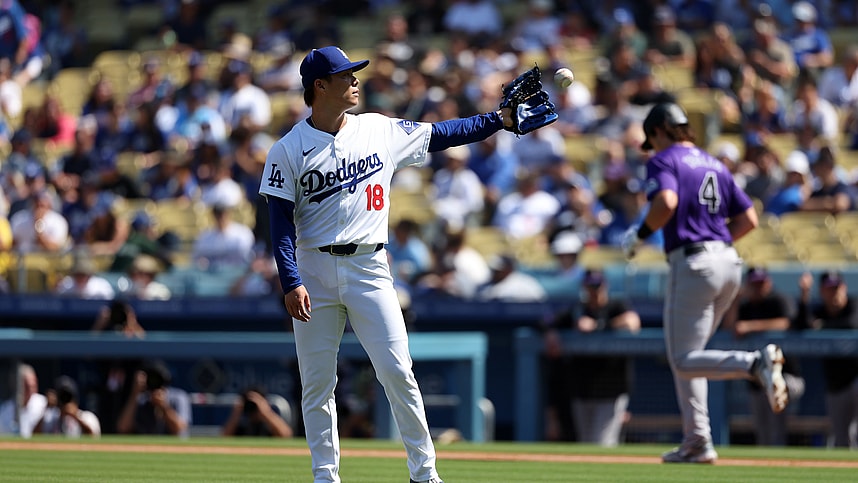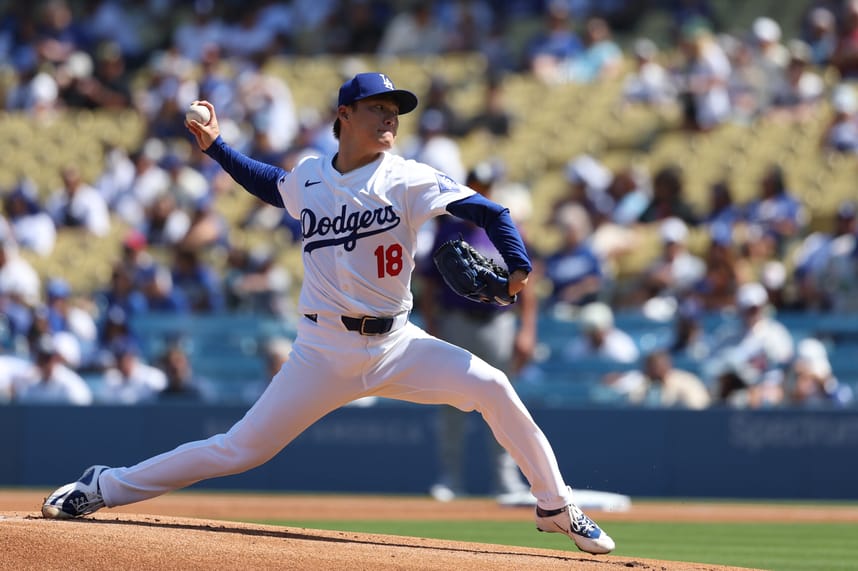
The Dodgers‘ starting rotation has been decimated by injuries over the past few months, losing key pitchers Gavin Stone and Tyler Glasnow. This places even more pressure on their $325 million free-agent acquisition, Yoshinobu Yamamoto, to step up in the playoffs and deliver excellent performances.
Yamamoto’s Impressive Rookie Season When Available
The 26-year-old Yamamoto is in his rookie season in the majors and has been impressive, tossing 85 innings with a solid 2.96 ERA. He has racked up 10.48 strikeouts per nine innings, a 75.6% left-on-base rate, and a 48.9% ground ball rate. In addition, he has allowed just 2.33 walks and 0.64 home runs per nine innings—metrics that highlight his dominance on the mound.
Despite allowing only five earned runs in his last five appearances, Yamamoto had a rare off-day in his most recent outing against the Colorado Rockies, where he gave up four earned runs. This performance was an outlier, especially given his overall consistency. A shoulder injury kept him out of the rotation from June to September, and a three-month absence disrupted his momentum, but he has bounced back well.

High Expectations for Yamamoto in the Postseason
Yamamoto’s advanced metrics suggest he’s on the path to becoming one of the league’s best young pitchers. He ranks in the 85th percentile in strikeout rate, the 80th percentile in chase rate, and the 82nd percentile in ground ball rate. These numbers indicate his ability to dominate opposing hitters.
Health will be a critical factor in Yamamoto’s long-term success, but he isn’t known to be injury-prone, making his shoulder issue more of an isolated incident. Fortunately, the injury appears to be behind him, and Yamamoto is focused on making a significant impact in the playoffs.
Dodgers’ Playoff Rotation Plans
Currently, the Dodgers are expected to rely on Jack Flaherty to start Game 1 of the playoffs, with Yamamoto slotted for Game 2, Walker Buehler for Game 3, and Landon Knack playing a supporting role. Los Angeles may opt for a three-man rotation, with Knack available as an auxiliary option if injuries arise. While the team would have preferred to have Stone and Glasnow in their rotation, they must adapt to the realities of baseball, where injuries are common across the league.

Yamamoto’s Pitch Arsenal
Yamamoto relies on a four-seam fastball, split-finger fastball, and curveball as his primary three pitches. Opposing batters have struggled against his split-finger fastball, hitting just .178 against it—a pitch he uses 24.6% of the time. His four-seam fastball averages 95.5 mph, though batters are hitting .267 against it, signaling an area for improvement. Yamamoto has experimented with a variety of pitches, but his core three pitches have each seen more than 20% usage this season, demonstrating a versatile arsenal that can keep hitters off-balance.
- Dodgers predicted to repeat as champions in 2025
- Dodgers’ star Japanese rookie set to make history in Tokyo Series
- Dodgers and manager Dave Roberts agree to record-breaking extension
Looking Ahead
Yamamoto’s ability to deliver in the playoffs will be crucial for the Dodgers as they navigate their pitching challenges. If he continues to perform at his current level, he could solidify his place as one of the game’s brightest young stars and help lead the Dodgers deep into October.
More about: Dodgers